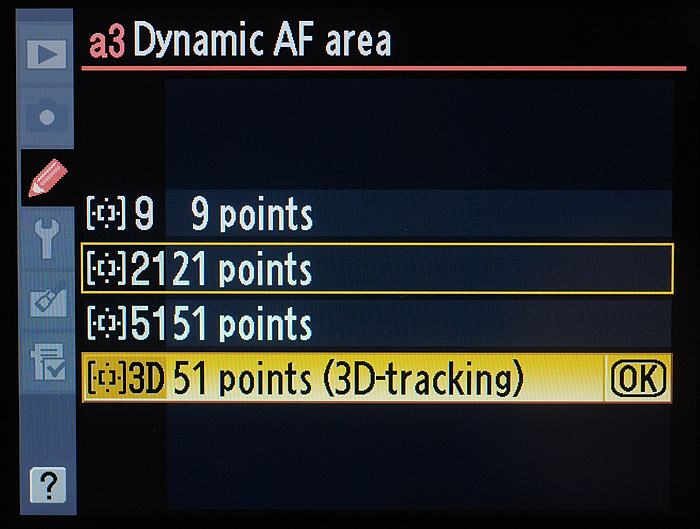One of the first things I look to when picking up a new camera is the menus. Body styles and button placements don’t change all that much, so there are few “WOW” moments on the outside of new models. Inside though, in the settings and menus, is where the manufacturers can really do some exciting things.
Multiple exposures, intervalometer, processing settings, noise and dynamic range adjustments – these are just some of the features that have been added or expanded on over the last several years. I always tell people that this is the classic two-edged sword. We photographers can gain some real benefits in quality and capability thanks to these advanced settings, but it also means we have to figure out what they do and how
they can help us best. I was reminded of that this past week as I was shooting some football and basketball.
I’ve been a big fan of Nikon’s 51-point autofocus system since it was introduced a few years ago. Faster and covering more areas of the viewfinder, it was a boon to action photographers. You could choose to use just one of those points, or take advantage of Dynamic AF with 9 points, 21 points or all 51 points. And if using 51 points, using the new 3D option as well. On top of that, you could set AF-C (continuous autofocus) to be release priority, focus priority, or a combination of the two. With several fast-action events coming up, I thought this would be a great chance to experiment with some different combinations of these settings.
Rather than go through every various permutation I tried, I’ll just cut to the summary. For both sports I’ve found that having AF-C set to “Release” seems to give me the fastest performance. In football I
like using Dynamic, 9 or 21 points. Basketball I’m really enjoying the 51-point 3D option, although last year I was lukewarm on its benefits. And for action that’s not very fast, where I really want the highest percentage of in-focus shots, I’m still using the AF-C “Release + focus” option.
So these are my settings. At least for now. In six months I may decide I prefer a different combination of settings. And that’s okay. After all, we’re given these choices so we can fine-tune how our cameras work based on what we’re shooting and how we like to shoot. They allow us to customize the gear to our personal preferences. This is one of the great advantages of today’s cameras. Really, the only mistake you can make is to never try different settings, to never play with what they do and how they can

Faces are as important in sports as they are in any other photography featuring people. Photo copyright Reed Hoffmann.
help you. After all, photography can and should be a life-long learning process. So get out there, have fun, try out all those menus you’ve never looked at before. Who knows, they may help you make an amazing photo.



